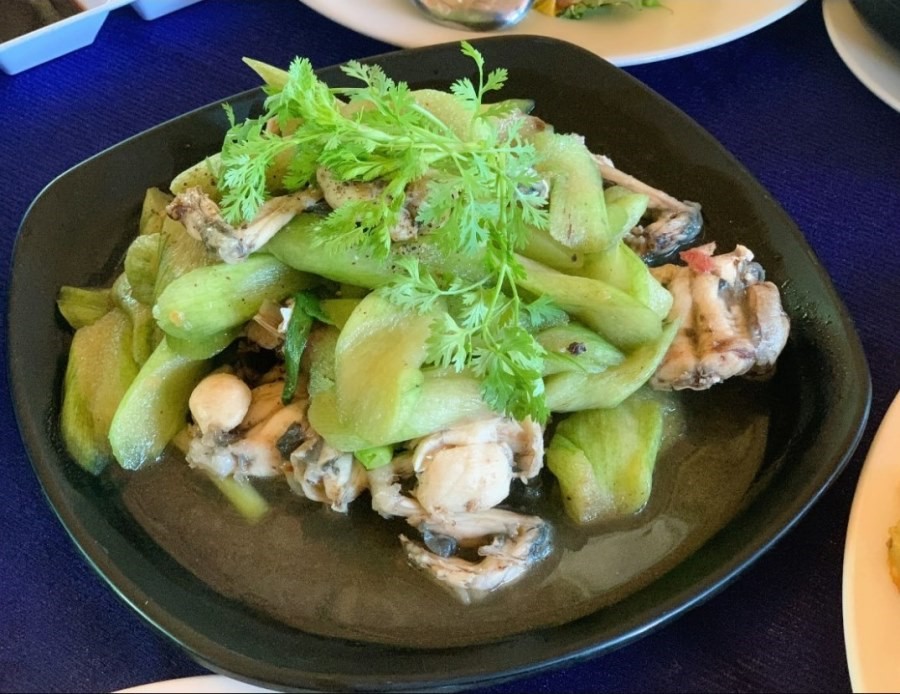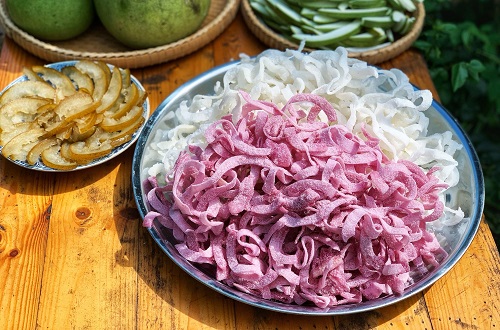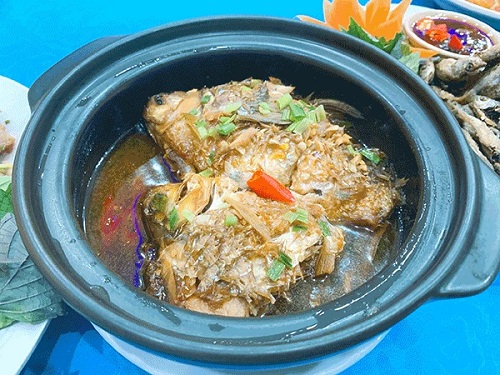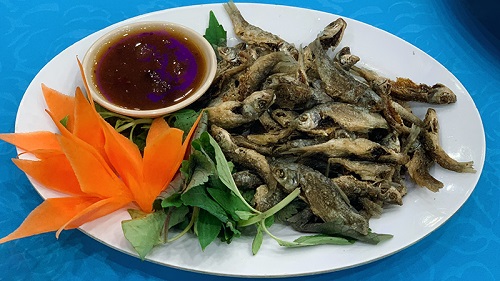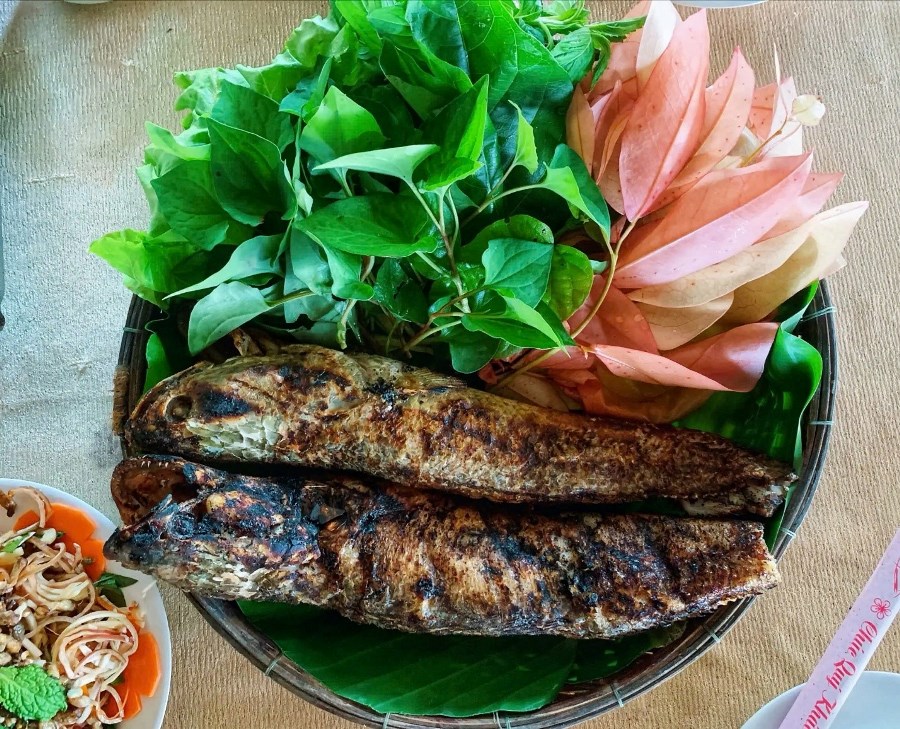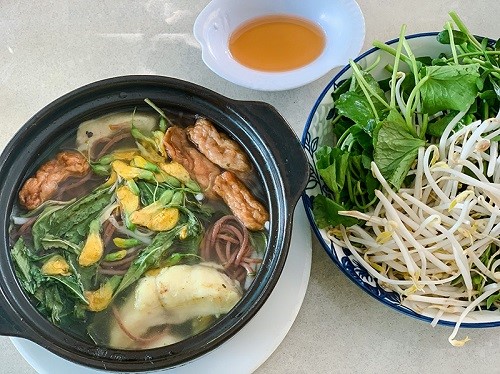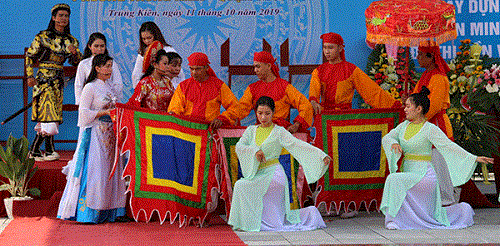
Ai Nghia artists board - the cradle from the land of the garden
In the process of learning about the history of the formation and development of DCTT, the Cai Luong theater in Can Tho, we have obtained many documents about the Ai Nghia artistes board, one of the earliest gathering places for artistes to live and interact in Can Tho. It is not an exaggeration to call the Ai Nghia Ai Nghia artistes board the DCTT's cradle of Can Tho from the Phong Dien garden because from here, many talents in DCTT have been given wings.
The name Ai Nghia is a combination of two famous villages in Phong Dien garden, Nhon Ai and Nhon Nghia. The Ai Nghia artistes board was formed at the beginning of the twentieth century, many people guessed it was between 1910-1915. This place gathers many talents in the field of music - chess - poetry - drawing from everywhere. And later on, they were the pioneers of DCTT becoming teachers of many juniors.

Portrait of Manh Tu - Truong Duy Toan. Documentary photo
The first person in the Ai Nghia artistes board must be mentioned is Mr. Manh Tu - Truong Duy Toan, a patriotic intellectual and philanthropist of the Duy Tan movement. Around 1913-1914, Truong Duy Toan was arrested by the French government when he participated in the Duy Tan movement. After serving time in prison, he was sent to Phong Dien, Can Tho to be detained under the guise of "an tri". Up to now, the time when Truong Duy Toan was "an tri" in Phong Dien has not been determined, but it can be guessed around 1913-1915.
In Phong Dien, he quickly made friends with patriotic philanthropists and artisans, and artistes. He is one of the first and core members of the Ai Nghia artistes board. As an intellectual, good at literature, he composed songs for artistes to sing. The poetic song, with many classics, and affection, is very much admired by the artistes. From the small songs, he wrote more long songs, with more movements, gestures, and emotions ... later called sing with movements (as presented in previous articles). The first song with movements of the Southern DCTT called "Bui Kiem failed the exam" was his composition.
After this song, he was inspired by Do Chieu's poem "Luc Van Tien" and continued to write "Lao Quan ca", "Van Tien mu", "Khen chang Tu Truc", "Thuong nang Nguyet Nga",... These songs were then gathered, and combined with spoken words, to form the first script of the cai luong stage with the name "Luc Van Tien". In the work "Ho Chi Minh City Cultural Geographic" there is a passage: "Truong Duy Toan used to be active in the Duy Tan movement, for a time was kept in Can Tho. There is the Ai Nghia artistes board. In his spare time, Truong Duy Toan composed a song for these artistes to play… Mr. Truong Duy Toan was the first person to create the form of singing with movements and "chap" singing, "lop" singing...".
Ai Nghia's artistes board also exchanged and performed in many places, later combined with the famous DCTT team in Binh Thuy to establish the cai luong singing troupe Ai Nghia. About this detail, in the work "Can Tho Geolocation", it is further recorded that the artistes group in Binh Thuy is led by actor Tam Quan. It is said that Tam Quan's voice is even better than Bay Cao, Nam Nghia, Ut Tra On... in the West. According to Prof. Academician and Musician Luu Huu Phuoc and Mr. Tam Quan are very good at classical music. The cai luong singing troupe Ai Nghia gathers "The Big Names". For example, musician Sau Hoa is famous among the artises, the instrumental player of many famous Cai luong Groups with his skill playing dan Tranh. Musician Sau Hoa is also associated with an anecdote about playing for Emperor Bao Dai and he was given a precious dan tranh by the emperor. In Ai Nghia's troupe, there are also Mr. Sau Can and Mr. Tam Do - two brothers of Mr. Chin Dieu - ie composer Dieu Huyen, the author of the famous Cai luong plays "Tieng ho song Hau", "Gio bui bien thuy"…
Tap Ich Ban - the "starting-up" place of Hau To of cai luong
In the book "DCTT, cai luong theater in Can Tho" there is a passage that says: "Vuong Co's artiste group in Thot Not formed around 1914-1915. This group has some main artists: Tran Ngoc Danh, Song Hy, Tu Ben, Bay Nhieu; musicians: Chin Dinh (dan Tranh), Tu Hanh (dan kim)". This detail shows that a group of artistes with many talents formed very early in Thot Not.
Mr. Vuong Co is of Chinese origin, owner of Phuoc Hiep wine factory. Vuong Co's father is Vuong Thieu, who sings Tieu. Due to a family tradition, looking around the western provinces, many troupes are well established, such as Thay Than's troupe in Sa Dec, Thay Nam Tu's troupe, Dong Bao Nam's troupe in My Tho, and Tan Thinh's troupe in Saigon. … so Mr. Vuong Co had the intention to set up a singing troupe in Thot Not. From the established artiste group with famous artisans and artists, Mr. Vuong Co founded the Tap Ich Ban's troupe.
About the time of opening the troupe, in the memoir "The joys and sorrows of singing life" by artist Bay Nhieu, from Thanh Hoa - Trung Nhut, Thot Not, the main singer of Tap Ich Ban, it is recorded: “Tap Ich Ban's Troupe opened on October 18, 1921 in Thot Not. I received 17 dongs a month, but my family cried a lot… because I leave the house for joining the troupe…”. According to author Nham Hung in the book "Composer Moc Quan - Nguyen Trong Quyen (1876-1953) Hau To of cai luong art", Tap Ich Ban was founded in the form of shares. Mr. Vuong Co carried the general work, and paid 3,000 dongs in advance for the cost, while others contributed labor force. The troupe assign: Mr. Vuong Co is the head of the troupe, Mr. Moc Quan - Nguyen Trong Quyen is the tuong director, Mr. Nguyen Ba Phuong is the manager, the main singer is the artist Bay Nhieu and instrumental band is in charge of Mr. Tran Ngoc Danh.

The portrait of composer Moc Quan - Nguyen Trong Quyen is being worshiped by his descendants. Photo source: retaken by DUY KHOI
At first, even though Tap Ich Ban still sang in "chap" style but it was full of fairy tales, beautiful costumes, and sceneries so that attracted viewers. Mr. Nguyen Trong Quyen at this time was still working as Village Guard, called the Village Guard Quyen, then because he wanted to be wholehearted with the troupe, he applied to stop being Village Guard.
According to author Nham Hung, in the 1920s, spending 3,000 dongs to set up a singing troupe was "a very brave thing", because that amount was equivalent to 6,000 bushels of rice - almost 3 billion VND now. According to the contract, Mr. Moc Quan - Nguyen Trong Quyen composes a tuong every month and sells it to the troupe for 150 dongs - not a small number, at present it is "copyright money". Author Nham Hung added: "In the beginning, composer Moc Quan was responsible for being a Tuong director to look after the tuong's practice, but he did not follow the troupe because he had not been given a leave of absence from the village. Particularly Bay Nhieu the first singer gets 17 dong/month, then gradually increases to 50 dong/month. The others are from 10-12 dong/month.
From the Tap Ich Ba troupe, composer Moc Quan - Nguyen Trong Quyen emerged as a bright star. Being good at composing plays, knowing how to put novel songs into the script, and then being good at practicing and instructing artists, his series of scripts have now become exemplary and classics of the cai luong stage. He is a virtuous person, living a righteous life, respected by artists everywhere. Therefore, he was called the Hau To of cai luong by posterity.
It can be said that from Tap Ich Ban, a singing troupe emerging from a group of artiste in Thot Not, has discovered and cultivated the Hau To of cai luong. That contribution of Can Tho to the country's theater art is great and proud!
--------
References:
- "Can Tho Geography", Provincial Party Committee - People's Council - People's Committee of Can Tho Province, 2002
- "Don ca tai tu, Can Tho cai luong stage", Thai Ngoc Anh, Can Tho University Publishing House, 2014
- "Composer Moc Quan - Nguyen Trong Quyen (1876-1953) The Hau To of Cai Luong Art", Nham Hung, Can Tho University Publishing House, 2018







